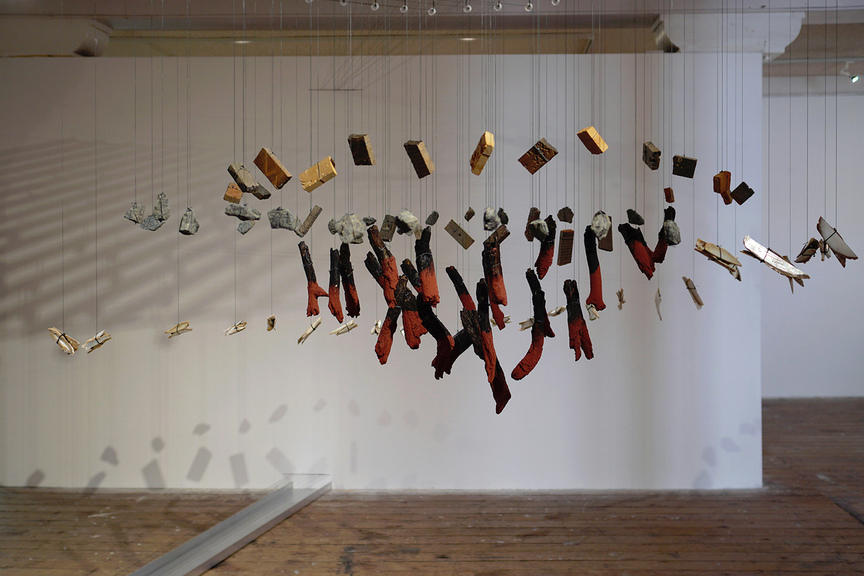
Robert Andrew, detail of Disruptive (Ill) Logic, 2017, pearl shell, rocks, etched blue stone, ocher, iron oxide, tree branches, string, 240 × 240 × 280 cm. Courtesy the artist and Metro Arts, Brisbane.
The Habitat of Time
The Habitat of Time
Arts Catalyst Centre, UK
20 February – 12 March
A great lineup of Australian artists, curated by Julie Louise Bacon (UNSW), and including James Geurts (ANAT CSIRO residency 2017/18), Robert Andrew, (exhibiting artist, ANAT Spectra 2018, The Art and Consequence of Collaboration) and Josh Wodak (ANAT commissioned artist for ISEA2013), are showing their work for the first time in the UK at The Habitat of Time, Arts Catalyst, London.
Focusing on the way that time as a medium shapes our perception of life and presented in the context of Julie’s current residency as associate curator at Arts Catalyst, the exhibition features work by Thomson & Craighead, James Geurts, Josh Wodak, Eva Nolan , Robert Andrew and Lucy Bleach.